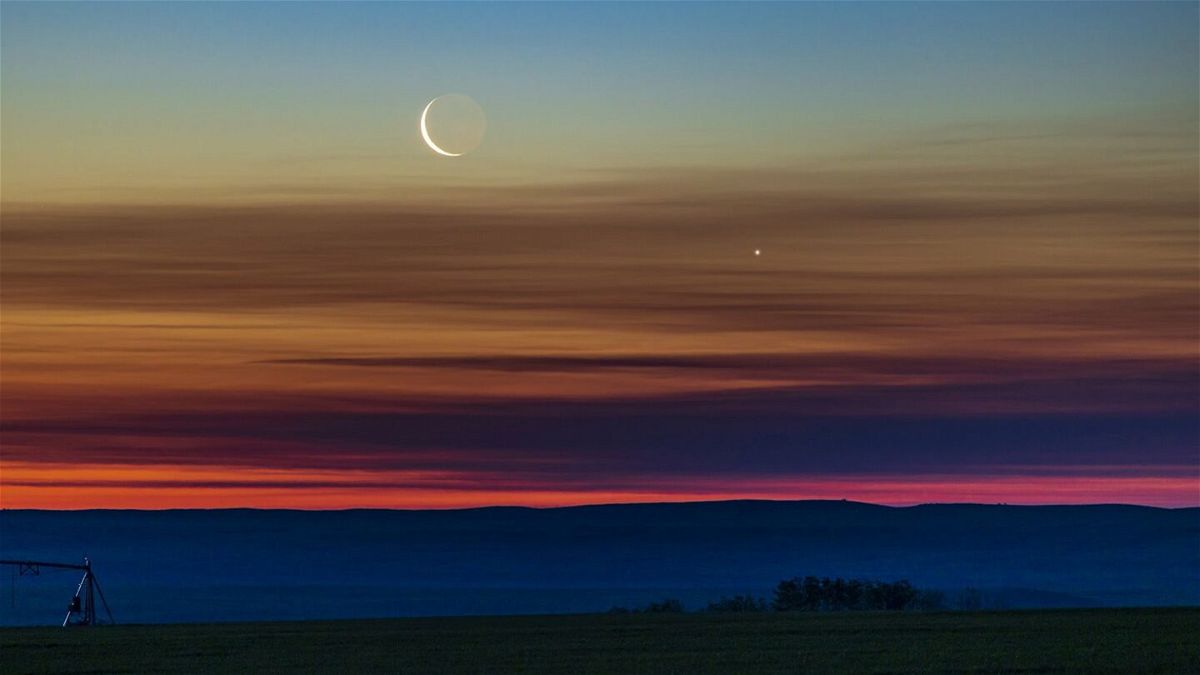Here’s when you can see the moon in the Da Vinci glow

Originally Published: 18 MAY 23 11:38 ET
Updated: 19 MAY 23 19:27 ET
By Madeline Holcombe, CNN
Editor's note: Sign up for CNN’s Wonder Theory science newsletter. Explore the universe with news on fascinating discoveries, scientific advancements and more.
(CNN) — Gaze up into the sky next week, and you might catch a glimpse of the Da Vinci glow.
It’s a phenomenon that can happen around sunset when a crescent moon is on the horizon, but the outline of a full moon is visible. The Da Vinci glow is a common occurrence, and easy to see, said Christine Shupla, the science engagement manager at the Lunar and Planetary Institute in Houston. But its appearance was once an inscrutable mystery.
What caused that ghostly full moon effect, sometimes called “the old moon in the new moon’s arms,” was an ancient question illuminated by Leonardo da Vinci, according to NASA. And the answer is light reflecting off of Earth onto the moon.
Distinct from sunshine, Earthshine refers to light from the sun reflected by Earth even after the sun sets, NASA said. Earthshine is about 50 times brighter than the light from a full moon.
Distinct from sunshine, Earthshine refers to the light emitted from Earth even after the sun sets, NASA said. This light source coming from Earth is about 50 times brighter than the light from a full moon.
When Leonardo theorized about this, Copernicus hadn’t even published the theory that Earth revolved around the sun yet. But through an artistic understanding of light and shadow and engineer’s understanding of geometry, Leonardo was able to ascertain where the ashen glow around the crescent moon came from, NASA said.
Leonardo was right about Earth reflecting light so the outline of the moon could be seen, but the astronauts of 1969’s Apollo 11 learned more. When the astronauts peered at Earth, the light wasn’t reflected by the oceans, as Leonardo thought, but by the clouds, NASA said.
Anyone with a view of the moon will be able see the Da Vinci glow, but the conditions need to be just right for it to happen, Shupla said.
“It’s easiest to see during either a waxing or waning crescent. You’ll need clear skies to see the Moon, but parts of the Earth need to be cloudy enough to reflect a fair amount of light onto the Moon,” Shupla said in an email.
“Sky watchers should look for the banana-shaped crescent Moon in the evening around sunset, and try to see the rest of the Moon, faintly lit,” Shupla added.
Correction: A previous version of this story incorrectly defined Earthshine.
The-CNN-Wire
™ & © 2023 Cable News Network, Inc., a Warner Bros. Discovery Company. All rights reserved.
